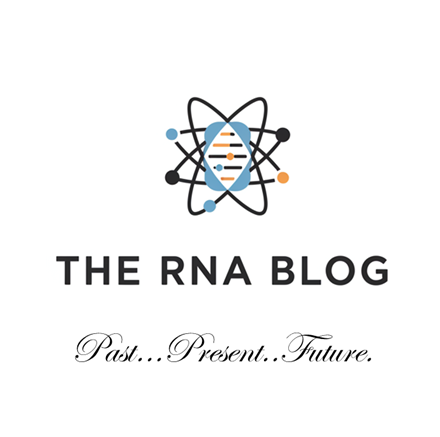The Unstable Star: Why RNA's Fragility is Both a Bug and a Feature
(And How We Tamed It)
Ever wonder how the instructions tucked inside your
DNA actually do anything? The answer lies
in a molecular middleman: Ribonucleic Acid,
better known as RNA. Once thought
to be a mere messenger, ferrying DNA's blueprints to the cell’s protein
factories, RNA has emerged as a versatile and powerful player in its own right.
It regulates gene expression, catalyzes chemical
reactions, builds proteins, and even shapes evolutionary change. But here’s the
twist: RNA is incredibly fragile.
This fragility seems almost paradoxical. How can
such a vital molecule be so... delicate?
The answer is both a tale of elegant biological design and an ongoing
scientific challenge. Let’s unpack why RNA is unstable, how life uses that
instability to its advantage, and what we’ve done to tame it — with profound
implications for medicine, diagnostics, and even agriculture.
Why is
RNA So Flimsy? Blame the Chemistry
To understand RNA’s fragility, we need to zoom
into its chemical backbone.
|
Feature |
RNA |
DNA |
|
Sugar |
Ribose |
Deoxyribose |
|
2' Position |
Hydroxyl (-OH) |
Hydrogen (-H) |
|
Unique Base |
Uracil (U) |
Thymine (T) |
|
Helix Shape |
A-form |
B-form |
|
Stability |
Unstable |
Stable |
The
main villain in RNA's instability is the 2'-hydroxyl
group (-OH) on the ribose sugar. Under certain conditions, especially alkaline pH or elevated temperatures, this group becomes reactive and
attacks the RNA’s own backbone in a self-destruct sequence known as hydrolysis.
DNA, by contrast, lacks this hydroxyl group,
making it far more chemically stable — and better suited for long-term genetic
storage.
Factors That Affect RNA Stability:
- pH: Higher pH
→ faster breakdown
- Temperature:
Heat = bad news
- Metal Ions:
Some (like Mg²⁺) help RNA work but also speed up its decay
- Structure:
Double-stranded or highly folded RNA is more stable
Nature’s
Trick: Turning a Bug into a Feature
So why hasn't evolution eliminated this fragile
molecule? Because instability is useful.
- Rapid Response:
RNA’s short lifespan allows cells to turn genes on or off quickly.
- Tailored Lifespans:
Some RNAs live for minutes, others for days — depending on what the cell
needs.
- Regulatory Powerhouses:
MicroRNAs, RNA-binding proteins, and chemical modifications (like m6A) can
tag RNA for destruction or protection. This enables precision control over gene expression.
In short: RNA instability lets cells be agile and
responsive — traits that are vital for survival.
The
Flip Side: A Nightmare in the Lab and Clinic
Biology may love RNA's flexibility, but
scientists? Not so much.
In the Lab:
RNA is extremely
sensitive to degradation by RNases,
enzymes found everywhere — on skin, in dust, even in supposedly sterile lab
supplies.
Working with RNA requires:
- RNase-free reagents and gear
- Regular glove changes
- Flash-freezing or stabilization agents
- Cold storage (typically -80°C)
- Integrity checks using tools like the Bioanalyzer
In the Clinic:
- Therapeutics:
Injected RNA is rapidly destroyed by RNases and can trigger strong immune
reactions.
- Diagnostics:
Degraded RNA in patient samples leads to false results.
- Vaccine Stability:
Early mRNA vaccines required ultra-cold storage — a logistical nightmare
for global distribution.
Taming
the Beast: Chemical Modifications
Scientists have engineered a suite of chemical modifications to make RNA
tougher, stealthier, and more effective.
Top RNA Modifications:
|
Modification |
Target |
Key Benefit |
Used In |
|
2'-O-Methyl (2'-OMe) |
Sugar |
Stability, reduced immune activation |
siRNA, ASO |
|
2'-Fluoro (2'-F) |
Sugar |
Increased binding/stability |
siRNA |
|
Locked Nucleic Acid (LNA) |
Sugar |
Super-stable and precise binding |
ASO, diagnostics |
|
Phosphorothioate (PS) |
Backbone |
Nuclease resistance, better uptake |
ASO, mRNA |
|
Pseudouridine (Ψ) / m1Ψ |
Base |
Boosts protein production, lowers immune response |
mRNA vaccines |
Protective
Bubbles: Delivering RNA Safely
Even modified RNA needs help to survive the
journey to its target. Enter delivery
systems.
🚀 Lipid Nanoparticles (LNPs): The Workhorse
Used in COVID-19 mRNA vaccines and siRNA drugs, LNPs are tiny fat bubbles that:
- Protect RNA from enzymes
- Help it enter cells
- Release it into the cytoplasm
Other Delivery Tools:
- Polymeric
Nanoparticles: Versatile but sometimes toxic
- RNA Conjugates (e.g.,
GalNAc): Targeted delivery to the liver
- Extracellular Vesicles:
Nature’s own delivery vehicles — still experimental
Often, the best results come from combining chemical modifications with smart delivery.
Why It
Matters: RNA Is Reshaping the World
RNA stability isn't just a molecular quirk — it’s
a cornerstone of modern biotech:
In Medicine:
- Vaccines:
Stabilized RNA + LNP = the mRNA vaccine revolution
- Genetic Therapies:
Treat diseases by replacing or silencing faulty genes
- Diagnostics:
Accurate tests rely on intact RNA samples
In Agriculture:
- Pest Control:
Sprayable RNAi could target pests with no harm to beneficial insects
- Improved Crops:
Use stable RNA tools for gene editing and trait enhancement
The
Road Ahead: Building the RNA Future
We’ve made huge strides in stabilizing RNA, but
challenges remain:
- Reaching non-liver tissues
- Simplifying production and storage
- Ensuring long-term safety
- Developing environmentally safe RNA sprays
Next-gen RNA tech may involve:
- AI-driven design of ultra-stable RNAs
- Circular RNAs (naturally more stable)
- Biodegradable, targeted nanoparticles
- Thermostable vaccines for global access
Conclusion:
The Delicate Power of RNA
RNA’s fragility once seemed like a flaw. Today,
we understand it as a feature —
a design principle that enables rapid, nuanced control over life’s most
essential processes.
And now, armed with modern chemistry and
biotechnology, we’re transforming this once-temperamental molecule into a
durable tool for health, science, and sustainability.
The unstable star of the cell has never been more
powerful.

